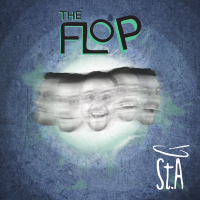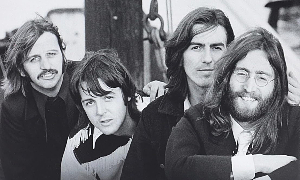Home » Jazz Articles » Book Review » Jelly Roll Morton: The Piano Rolls
Jelly Roll Morton: The Piano Rolls
 Realized by Artis Wodehouse
Realized by Artis Wodehouse Hal Leonard, 1999
ISBN 0-7935-9887-7
By using MIDI technology with collector’s copies of the original player piano paper rolls, Artis Wodehouse has created the written music that corresponds with Jelly Roll Morton’s piano rolls. The book contains music for six of those twelve piano rolls. "Grandpa’s Spells," "King Porter Stomp," "London Blues," "Original Jelly Roll Blues, "Shreveport Stomps" and "Stratford Hunch" are represented in complete and readable musical notation consistent with the vast library of materials that has been issued from Hal Leonard over the years. "Stratford Hunch" is also known as "Chicago Breakdown." "London Blues" is also known as "Shoe Shiner’s Drag." These are memorable songs, and attempting to recreate them on your own piano could be challenging. Slowing them down helps. The original paper roll speed has been converted to metronome markings and indicated for each song, giving the practicing pianist an opportunity to perform at the same speed as a player piano.
The age-old interpretation of swing poses an immediate problem. Straight eighth notes in pairs and triplets must be presented by the performer in the manner Morton and other early pianists preferred. But that’s the easy part. Performers have been "swinging the written music" for nearly a century.
The other problem is how to deal with the modifications made by the original roll editors of the 1920s. Paper rolls were modified to make the product more interesting; holes were elongated and some were added. It made the player piano’s version of these classic songs quite interesting, but it also made them more difficult. Grace notes, glissandi, and such are notated in the book. They’re easy enough to understand, but quite difficult to play; they make quantifiable goals for the performer.
Jelly Roll Morton’s recorded music is available to the listener on CD. In an afterward, pianist Butch Thompson reminds us that the piano rolls are different from the recordings Morton made in roughly the same time period. Pianist and music historian Artis Wodehouse has provided a means by which we can examine that difference and explore the music for ourselves. Her book is suitable for the serious jazz student or for the curious fan.
This review copyright (c) 1998 by Larry Koenigsberg.
Tags
PREVIOUS / NEXT
Support All About Jazz
 All About Jazz has been a pillar of jazz since 1995, championing it as an art form and, more importantly, supporting the musicians who make it. Our enduring commitment has made "AAJ" one of the most culturally important websites of its kind, read by hundreds of thousands of fans, musicians and industry figures every month.
All About Jazz has been a pillar of jazz since 1995, championing it as an art form and, more importantly, supporting the musicians who make it. Our enduring commitment has made "AAJ" one of the most culturally important websites of its kind, read by hundreds of thousands of fans, musicians and industry figures every month.























